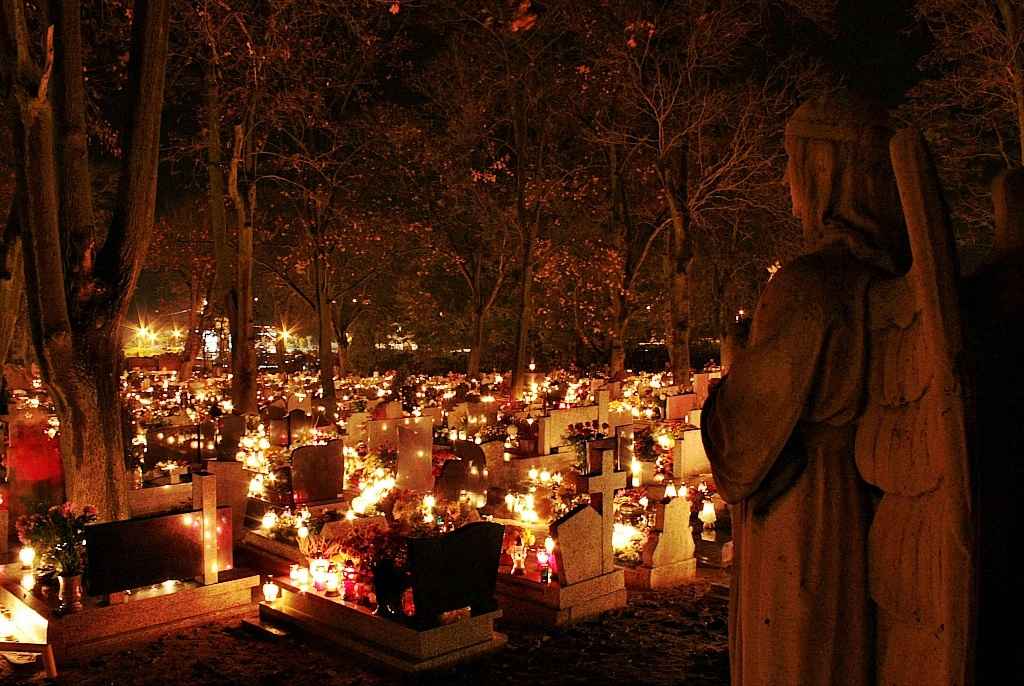Discover the differences and similarities between these two worldwide famous celebrations. All Saints’ Day is a Catholic festivity celebrated on November 1st, established by Pope Gregory III with the intention of honoring all saints, known and unknown.
In Spain, like in many other countries, All Saints’ Day is aimed to remember and honor deceased. Yearly, a mass in memory of dead is celebrated, and relatives who are not with us anymore receive flowers from believers who go to the cemetery. Traditionally, it was a really formal festivity that has gradually become a merry day, chosen for many people to escape from city and routine, especially in case of Friday or Saturday. Besides, it also has very strong gastronomical connotations.
Gastronomy
On All Saints’ Day, wind fritters and Saints’ bones are the typical food. Wind fritters are sweets made of flour, butter and eggs, inherited from the Jewish tradition of Hanukkah, celebrated also in November. Saints’ bones are made of almonds and sugar and receive their name due to its similarity in shape with a bone with its squash.
All Souls’ Day and Halloween
The day following that of All Saints’is All Souls’ Day, another Catholic celebration aimed to pray for our deceased relatives. Although All Souls’ Day coincides with the popular Mexican festivity Day of the Dead, in Spain this date is not considered as a holiday and none popular party is held such day. Which it is certainly celebrated is the previous day, All Saints’ Day, the night of October 31th, better known as Halloween.
Although Halloween is an Anglo-Saxon party far removed from Spanish tradition, during last years, it has increased its popularity, probably due to cinema an American TV series influence. In any case, Spanish has only partially adopted such festivity. On the one hand, more and more Halloween parties are organized, where people dress up with all kind of terror and dead costumes: witches, vampires, zombies, ghosts, and so on. On the other hand, the tradition of going with children in costume from house to house asking for candy has not been introduced, and it is very unlikely that you find someone carving pumpkins.
Despite Spanish celebration of Halloween is very recent, it is strongly linked to All Saints’ Day, since this festivity, also named after “All Hallows’ Evening” or “All Hallows’ Eve” gradually evolved in the English language until turning Halloween.
Halloween is an imported custom celebrated mainly by young people but, in some areas of Spain, especially Galicia and Catalonia, there are traditional festivities such as magosto and castanyada, coinciding with Halloweenboth with date and with its relation with mortuary rituals.
The greatest difference between Halloween and other festivities celebrated along Spanish territory during October 31th and November 1st are costumes. All this celebrations are somehow related with the issue of death, but Halloweenis more perceived as a carnival type of festivity than as the traditional honoring date of All Saints’ Day.
Don Juan Nights in Alcalá
Another popular custom in Spain—and more specifically in Alcalá—during All Saints’ Day are theatre performances of Don Juan Tenorio by José Zorrilla, a tradition linked with the festivity through its mysterious and horror emplacement, a cemetery. In Alcalá de Henares, two performances used to be played, generally on October 31th and November 1st. During last years, Don Juan in Alcalá has become so popular that has been considered as Fiesta de Interés Turístico Regional [Festivity considered to be of regional tourist interest] since 2002.
Video: Zombies pouring calle Mayor
Video: All Saints’ Day Festivity
Video: All Saints’ Day Gastronomy
photo credit: eisenbahner via photopin cc
Sigue disfrutando de Dream Alcalá:
- Telegram: Recibe nuestras noticias y contenido exclusivo (clic aquí).
- Newsletter: Recibe cada tarde un correo con nuestras últimas noticias (clic aquí).
- YouTube: Suscríbete para ver nuestros mejores vídeos (clic aquí).
 Sé tú el periodista: envíanos tus fotos o noticias a través de Telegram.
Sé tú el periodista: envíanos tus fotos o noticias a través de Telegram.

